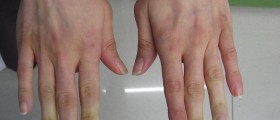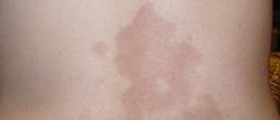
A Brief Introduction
Coldhands and feet are most commonly experienced when a person is exposedto low temperatures. What happens when a person's hands and feet areexposed to low temperatures is that the arteries of the body narrowdown thanks to the temperature, which in turn affects the flow ofblood towards the hands and feet and makes them go cold.
Andthis is perfectly normal so long as the cold hands and feet are notaccompanied by any other symptoms.
Onthe other hand, there is a number of people, whose handsand feet are always cold. This is not a result of exposure to lowtemperatures, but is often rather differently caused by a variety ofother possible health problems.
Thereis a range of factors which may be found responsible for the inconvenience of having cold hands and feet,and this article takes a closer look at just what the most commonamongst the causes may be...
Raynold's Syndrome
Raynold'ssyndrom is more commonly known as: cold hands and feet syndrome, andit is a blood vessel contract abnormality. Plainly put, it is adisorder of blood distribution and its manifestation is the unevensupply of blood to the tissues of certain parts of the body.
Whena person who is suffering from Raynold's syndrome is exposed to low temperatures, his or her fingers experience extreme pain and curiousdiscoloration (ranging from white to blue).
Thetarget audience of this disorder is most commonly found among womenbelow the age of forty.
Frost Bite
Frostbite is a type of physical injury which is a result of exposure to freezing temperatures.
Thisaffects the fingers and toes (pretty badly) in such a way that theskin becomes frozen, which in turn almost completely cuts off theblood supply to the relevant parts of the body.
Thankfully,in most cases the damage is only skin-deep, and recovery shouldn't betoo big of a deal considering the circumstances. However, if theexposure to the damaging factors is prolonged, it may also causeblisters which will require extra care.
Ultimately,in extreme cases, this type of exposure will cause damage tounderlying structures and blood vessels as well.
Other Causes
Apartfrom disorders and frost bite, there is a number of other factorswhich may cause cold hands and feet. These may range from having atherosclerosis to having diabetes. There are also peripheralvascular diseases which cause the very same symptoms.
Other causes may include: panic attacks, chronic allergies, iron deficiency, hypothyroidism, to name a few.
How are cold hands and feet treated?
Fistoff, a word on taking care of frost bites: they ought to be kept cleanand dry. Applying pressure or rubbing while cleaning them is to beavoided, and obviously, the frostbitten bits ought to be protectedfrom further exposure to cold.
Otherwise,when the condition is caused by another condition, each case shouldbe analyzed by the sufferer's doctor and treated according to theunderlying condition. Medication, exercise and a change in diet andlifestyle may be required.

















Your thoughts on this
Loading...